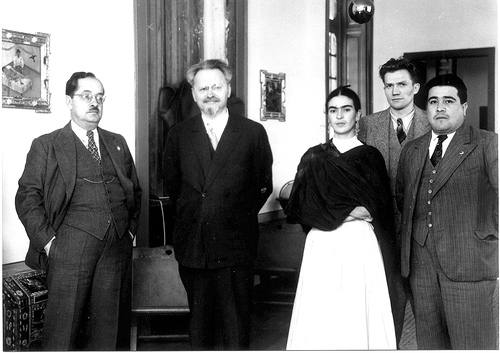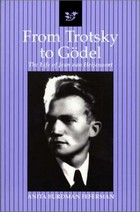Special Issue
Edited by Irving H. Anellis
Indiana University-Purdue University at Indianapolis
23 July 2012 marks the centenary of the birth of historian and philosopher of logic Jean van Heijenoort, whose anthology From Frege to Gödel helped define the nature and scope of modern mathematical logic for several generations of logicians and the canon of fundamental works that comprise the text for the formative period of mathematical logic as we know it today. His influence in the history of mathematical logic was furthered by his work as the editor of the papers of Jacques Herbrand and in his contributions to the publication of the multi-volume Collected Works of Kurt Gödel.
The articles, published and unpublished, that were brought together in his Selected Essays articulated his conception of the course of the origin and development of mathematical logic. His El desarrollo de la teoría de la cuantificación provided an exposition of the “family of formal systems” that comprise quantification theory and its proof procedures: the axiomatic method, itself comprised of Frege-type systems and Hilbert-type systems; Herbrand quantification; natural deduction; and the Gentzen sequent calculus, which van Heijenoort enumerated as the four principal approaches to first-order predicate calculus. He briefly examined the history of each and considered them in their classical, intuitionistic, and minimal versions and compared the strengths and weaknesses of each.

As editor of From Frege to Gödel, van Heijenoort exercised a critical influence on the historiography of logic through much of the second half of the twentieth century. Although aspects of his views on the nature and scope of mathematical logic have more recently been challenged, as have aspects of his conception of the history of mathematical logic, his ideas remain of continuing influence among historians and philosophers of logic and frequently serve as the starting point in discussions which challenge his views, for example, his often exaggerated emphasis on the pivotal work of Gottlob Frege and corresponding comparative neglect of the contributions of Frege’s contemporaries among the algebraic logicians, and in particular of Charles Sanders Peirce and Ernst Schröder. Thus van Heijenoort’s work continues to occupy a significant place in the historiography and philosophy of logic.
In addition to his historical work, van Heijenoort left a body of manuscripts and typescripts, many of which were distributed to a handful of close colleagues and to his Brandeis University logic students, and in which he explored the model-theoretic properties of the falsifiability tree method, particularly its soundness and completeness, and the relation between the truth tree and falsifiability tree methods and its ancestors, in particular Herbrand quantification and Beth tableaux. In his Introduction à la sémantique des logiques non-classiques, van Heijenoort applied the tree method to intuitionistic and modal logic.

Jean Louis Maxime van Heijenoort (1912 - 1986)
Irving H. Anellis, Guest editor introduction.
Jean van Heijenoort, Historical development of modern logic
Irving H. Anellis, Jean van Heijenoort's conception of modern logic, in historical perspective
Solomon Feferman, On rereading van Heijenoort's selected essay
Jaakko Hintikka, Which mathematical logic is the logic of mathematics?
Anita Burdman Feferman, Jean van Heijenoort: Kaleidoscope
Almost everything Jean van Heijenoort did was an all or nothing affair. “I believe in strong feelings,” he said, “without that there is nothing. If there is no passion, what’s the point?” Whether the matter at hand had to do with the obvious areas of politics and love or logic or punctuation or how to cook a fish or how to travel from one part of town to another, he was always after “the right way.” (p.282)
John W. Dawson Jr, Jean van Heijenoort and the Gödel editorial project
Philippe de Rouilhan, In defense of logical universalism: taking issue with Jean van Heijenoort
Irving H. Anellis, Jean van Heijenoort's contribution to proof theory and its history
Anssi Korhonen, Logic as a science and logic as a theory: remarks on Frege, Russell and the logocentric predicament
Claus-Peter Wirth, Herbrand's fundamental theorem in the eyes of Jean van Heijenoort
Francine F. Abeles, Towards a visual proof system: Lewis Carroll's method of trees
Ignacio Angelelli, Frege's ancestral and its circularities
Scholarly publications of Jean van Heijenoort compilded by Irving H. Anellis
4 Kirkland Place, Cambridge, Massachusetts
Van Heijenoort resided in this house, at 4 Kirkland Place, that had once belonged to the Peirce family—to Charles Sanders Peirce’s father, mathematician Benjamin Peirce (1809–1880), Charles’ aunt Charlotte Elizabeth (“Aunt Lizzie”) Peirce (d. 1888), and lastly, to Charles’ brother, mathematician James Mills (“Jem”) Peirce (1833–1906).
